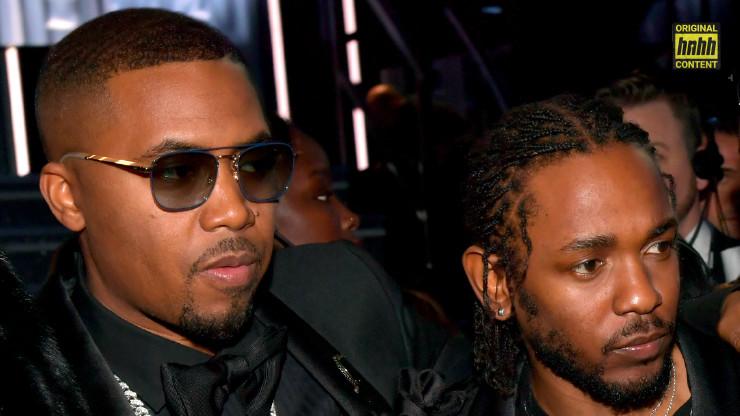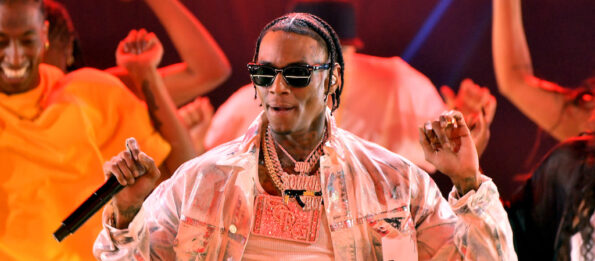What drives an artist to craft a classic record?
It’s been said that hip-hop is a young player’s game. Though what constitutes “young” is certainly debatable the sentiment remains relatively clear-cut. There are certainly several pitfalls older artists must contend with. With experience comes success and with success comes a satiated appetite. That hunger of the come-up might not be what it once was. Not to mention that increased success often has a direct impact on an artist’s subject matter. Purchases that might not have been available are now adorning the living room. That one goes both ways, opening the door for all matter of exuberant new flexes. But flexing is comfortable. Comfort can be an ailment to creativity.
Likewise is longevity a double-edged sword. While stacked discographies should be applauded some casual listeners might eventually feel the devious hints of fatigue setting in, especially if a particular rapper does little to adjust to the changing climate. Consider an artist with ten albums — is number nine or ten ever seen in higher regard than number one or two? That’s not to say it never happens. But by that point it’s usually the core fans sticking around. The younger listeners have likely moved onto something new, something that speaks to a) their sonic preferences or b) the tastes of their desired social status. One viral single can hold more weight than a completed project, which can sometimes feel tacked on as a mere receptacle for said single. The breakneck pace of consumption mirrors that of the creation process, especially with today’s climate for the surprise album.

Carmen Mandato/Getty Images
One can wax poetic about the impact of the modern music industry on creativity for paragraphs on end. In this case, I’d like to pull back and attempt to discern whether an average “creative prime” can be concluded. One in which an artist’s creative output is at its most refined, culminating in what can unanimously be concluded to be his or her best work. In an era in which rappers remain productive well into their forties, the question does seem more topical than ever. To simplify the process, categories shall be broken down as follows: Late Teens, Early Twenties, Late Twenties, Early Thirties, or “The Beyond.” As the recording process itself might differ from a given release date, for the sake of clarity, the focus will remain on the time of an album’s release.
Let’s begin with the game’s active Big Three. Kendrick Lamar, Drake, and .
Kendrick is 32, Drake is 34, and J. Cole only recently turned 35. Though Kendrick’s catalog is in itself a hotly contested affair, it’s safe to conclude that many deem Good Kid maad city and To Pimp A Butterfly to be his strongest albums. During the former’s release in 2012, Kendrick was 24 years old. When To Pimp dropped in 2015, Kendrick was twenty-seven. Depending on where you which camp you occupy, Kendrick’s magnum opus occurred during his early twenties or late twenties. However, he’s set to drop another album this year, and should it be even remotely close to classics, he’ll be putting on for a new category altogether. It should, however, be considered that Kendrick was twenty-five — the midpoint– when he dropped “Control.” Should you be inclined to factor Section Eighty into the fold, the answer becomes all the more clear.
J. Cole is slightly more difficult to pinpoint. Someone who counts KOD as his arguable best might point to the early thirties as his prime. Not to mention the showstopping slew of feature verses throughout the past two years. For the many who count 2014 Forest Hills Drive to be Cole’s classic, consider that he was roughly twenty-nine when that released. Some might argue that his early mixtape run was his prime, but Cole appears to have developed a more self-assured vision over time. He also ironed out a few technical kinks to the point where he effectively bodied elite emcees with ease. Even on Revenge Of The Dreamers 3, released last year, Cole’s presence is that of a self-assured and wizened leader — qualities reflected in his contributions to the project.

Issac Baldizon/NBAE Getty Images
When Drake came into the game with So Far Gone, the 6ix God was twenty-three years old. With the favored narrative speaking to Take Care as his best body of work, the 2011 release speaks to a twenty-five-year-old man simply looking to find his way. With Nothing Was The Same being recorded at twenty-six and If You’re Reading This arriving at twenty-nine, it’s safe to call the late twenties the most creatively prosperous era of Drizzy’s career. To be fair, while Scorpion was hardly his most acclaimed effort, it did bring an interesting new swagger into the fold. Whether the success of his next album is enough to turn the tides has yet to be seen, but what happens if he comes through with an undeniable classic?
Next up are another trifecta of GOAT contenders: Jay-Z, Eminem, and Nas.
While many conclude that Jay-Z has three and sometimes four classics to his name, it should be noted that two of them came one after another: The Blueprint (2001) and The Black Album (2003). When the former dropped, Jay was thirty-one. When his so-called retirement hit, Jay was thirty-three. Given that these are two back-to-back classics in a two-year stretch, it seems fair to call his early thirties Jay’s creative prime. True, his late twenties were staggering on the basis of pure productivity, but the early millennium found Jay at his lyrical peak, his artistic sensibilities at an all-time high.
When Eminem broke out with his major-label debut The Slim Shady LP in 1999, Eminem was twenty-six years old. Immediately after came The Marshall Mathers LP in 2000, D12’s Devil’s Night in 2001, and The Eminem Show in 2002. On “Soldier,” Em even alluded to the possibility of waning with age, rapping “when the fire inside dies and expires at thirty.” Whether that proved to be foreshadowing is certainly debatable (though many still enjoy Slim’s recent output), but it’s absolutely indisputable that Eminem’s creative prime occurred during his late twenties. Unlike some fellow veterans of his age range, Slim has proven that he can still put in work in his late forties with both Kamikaze and Music To Be Murdered By arriving with a renewed sense of hunger.

Bill Pugliano/Getty Images
It’s become a part of hip-hop lore that Nas was twenty years old when he dropped Illmatic in 1994. And while it’s widely regarded as his prime, the early twenties run to follow….less so. On average, it’s much easier to examine the run between 2001 and 2003, which found Nas dropping Stillmatic, God’s Son, and Streets Disciple. The sequel to his classic debut arrived when Nas was twenty-seven, with God’s Son landing at twenty-nine. Depending on whether you hold Illmatic and I Am over Stillmatic and God’s Son, Nas’ creative prime can be argued as either his early or late twenties. Much like Kendrick Lamar, the argument for Nas is based almost entirely on personal preference.
Kanye West is a curious case, as time also happened to bring upon a vast stylistic departure for the creative megastar. While some remain loyal to his formative sample-based work like College Dropout and Late Registration, released when Yeezy was twenty-five and twenty-seven respectively. With Graduation rounding things out at twenty-nine, it’s evident that his late twenties coincided with one of the most acclaimed runs of his career. And yet his early thirties has its own fans, largely in part to 808s And Heartbreak and My Beautiful Dark Twisted Fantasy, an album widely considered to be his magnum opus. For some context, the latter was released when Kanye was thirty-two years old, mirroring the late-career artistic surge of his Watch The Throne collaborator Jay-Z. Speaking of which, that very album came when Kanye was thirty-year, standing at the arguable height of his fame and reverence. With Yeezus signaling his thirty-fifth birthday with a bang, is it fair to declare Kanye’s artistic prime to be the onset of his third decade?

Dave Kotinsky/Getty Images
I recently mused on a piece that led me to reflect on the game’s current climate. Among the artists named were Denzel Curry (24), Joey Bada$$ (25), (26), (25), (28), (21), Lil Uzi (25), Playboi Carti (23), (27), Megan Thee Stallion (24), Young M.A. (27), J.I.D. (29), Mick Jenkins (28), Rapsody (37), and Maxo Kream (29). Personally, I would say the best of the aforementioned are those currently within their late-twenties, though some of the younger artists certainly have promising careers ahead of them. In truth drawing any semblance of a conclusion is impossible, as creativity seldom has an age limit. Yet there remains a misconception, likely fueled in part by the record label mentality of everything now, that rap is a young man’s game. It goes without saying that youth is relative, but hip-hop tends to look at thirty as a damn near boomer.
What those lamenting “old head energy” fail to realize is that experience can open the door to wisdom. Truly analyzing one’s situation tends to benefit from hindsight and with that comes the passage of time. For an artist boasting an extensive career, it’s likely that the fans have already come to appreciate them on a deeper level. Their story, the milestones they’ve witnessed from afar. After the dust has settled and the reflections have long been pored over. For artists like Royce Da 5’9″ and 2 Chainz, both 42, one might argue that the last few years have been the most artistically fruitful of their career. Much of that came from an increasing level of openness and vulnerability, two qualities with an immediate impact on their storytelling. Songs like Royce’s “Power” and Tity’s “Burglar Bars” would not have come from an artist looking to get their foothold in the game; case in point, contrast their later work with their earlier albums like Rock City and Based On A T.R.U. Story.
Remember, this isn’t an exact science here. Simply a reflection on aging gracefully in hip-hop. Upon checking out some statistics, do you feel like the notion of rap as a young player’s game to be accurate? Or are wisdom and experience the pillars of true brilliance?



